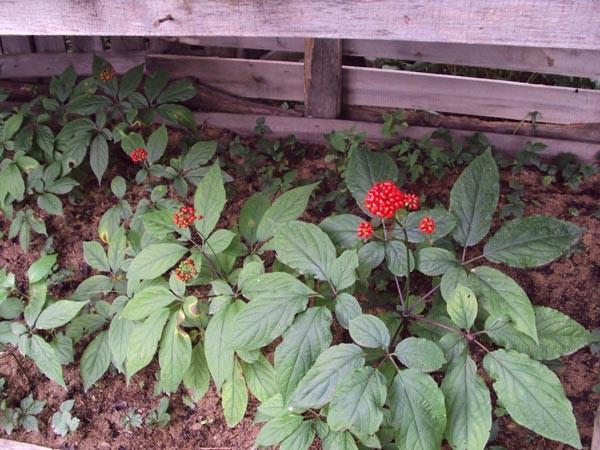Growing ginseng in the garden - the subtleties of planting a medicinal plant

Luring with its healing power and high cost of roots, ginseng is a tasty prey for poachers. For this reason, growing ginseng in the garden is a popular activity, and for some, even a successful business. It is quite difficult to find ginseng in natural conditions in Russia. Costly root hunters often outpace herbalists. But even in the middle zone of our homeland, it is quite possible to plant and collect ginseng on your own. If you are fortunate enough to grab a few roots, try it.
Ginseng can also be planted with seeds, however, given its slow development, it is better to purchase seedlings. They are usually young roots aged 1 to 3 years. Ginseng from seeds will give the first thin roots not earlier than 4 years, and good ones, weighing at least 40 g - only by the 7th year of cultivation. Planting seedlings allows you to speed up the process for a couple of years.
When to plant ginseng roots
Ginseng roots are best planted outdoors. late autumn. In October, when the first frosts come, you can start to rooting with the obligatory cover of the beds. But you should not do this before. With early autumn planting, the sprouts that appear are still weak and not ready for wintering. This is fraught with the death of seedlings.
If the dates for the autumn planting were missed, plant ginseng roots are also possible in spring, but not earlier than April. In this case, the beds do not hide. It is enough just to mulch them with sawdust to preserve moisture.
When buying seedlings, you should pay attention to their varietal affiliation. Thus, American ginseng is distinguished by increased frost resistance, but it is not as useful as the Far Eastern one.
Growing ginseng in the garden - how to plant correctly
By the middle of autumn, the bed should already be prepared: drainage has been laid, loose soil is covered. Now you can proceed directly to planting:
- Make holes at least 20 cm apart.
- Place one root in each hole so that the kidney looks up. In this case, this should be done at an angle of 45 °.
- Cover the roots with earth, deepening the kidney by about 5 cm.
- Water well.
- Cover the bed with fallen leaves.
- Cover the top with a sheet of iron or boards so that the leaves are not blown away by the wind.
Since the roots will be completely covered with soil, you need to put a mark near the hole by sticking a twig. This will help to find plantings in the spring and not accidentally pull them out along with the weeds.
With the arrival of spring, boards can be removed from the beds. It is also advisable to change the leaves to fresh mulch... During the summer, young ones need to moderately water the young bushes, monitor the lighting and, if necessary, shade the garden bed. For the winter, the plants will again need to be mulched, cutting off the dead aerial part before this.
Perhaps the only drawback of growing ginseng in the garden with the help of roots - the high cost of the seedlings themselves. Seeds stand cheaper, but it will take longer.